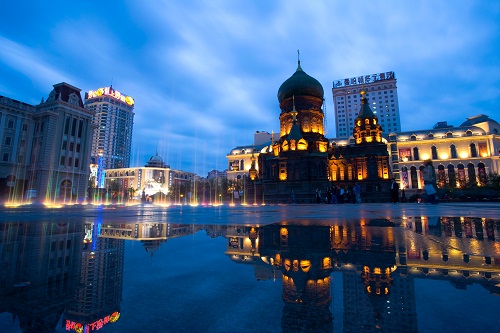Harbin, World of Ice and Snow

Harbin is China's northernmost major city, with a population in excess of 10 million, and over 4 million in the city center alone. Historically, the city has been influenced a lot by neighboring Russia, in particular after the Russian Revolution of 1917, when the White Russians, Russians who supported the czarist state, escaped the newly formed Soviet Union. The influence remains clearly visible in the building styles and foods.
The city was founded in 1897 as a camp for Russian engineers surveying the Trans-Siberian Railway. Labor demands brought in a collection of outcasts from across Russia, Poland and even from within Manchuria. The city eventually was captured by the Japanese during World War II and later captured by the Chinese in 1946. Once nothing more than a Russian-built outpost of the railway line, Harbin has managed to become a major player in her own right as well as capital of Heilongjiang Province.
Harbin is infamous for its very cold winters—it is at the same latitude as Montreal, and winter temperatures as low as −38 °C (−36 °F) have been recorded, though in January daytime temperatures average −12 °C (10 °F). Bring more clothes than you will think you will need so that you can layer. Winter can become dreary if you are a long-term resident, as the entire city uses coal for heat; air quality rapidly decreases during these months.
Harbin can be a great place to visit in the summer, with daytime temperatures normally in the upper 20s °C. Compared with most places in China, the weather is cool and it seems to be perpetually breezy, and most of the city's streets are lined with trees. Because the city is so cold all winter, life almost explodes and people crowd the streets until late at night eating kabobs, playing poker, and drinking Harbin Beer (哈啤 Hapi). This is a great escape from the heat of Beijing. A trip up to the border regions this time of year would be nice as well.
from wikitravel